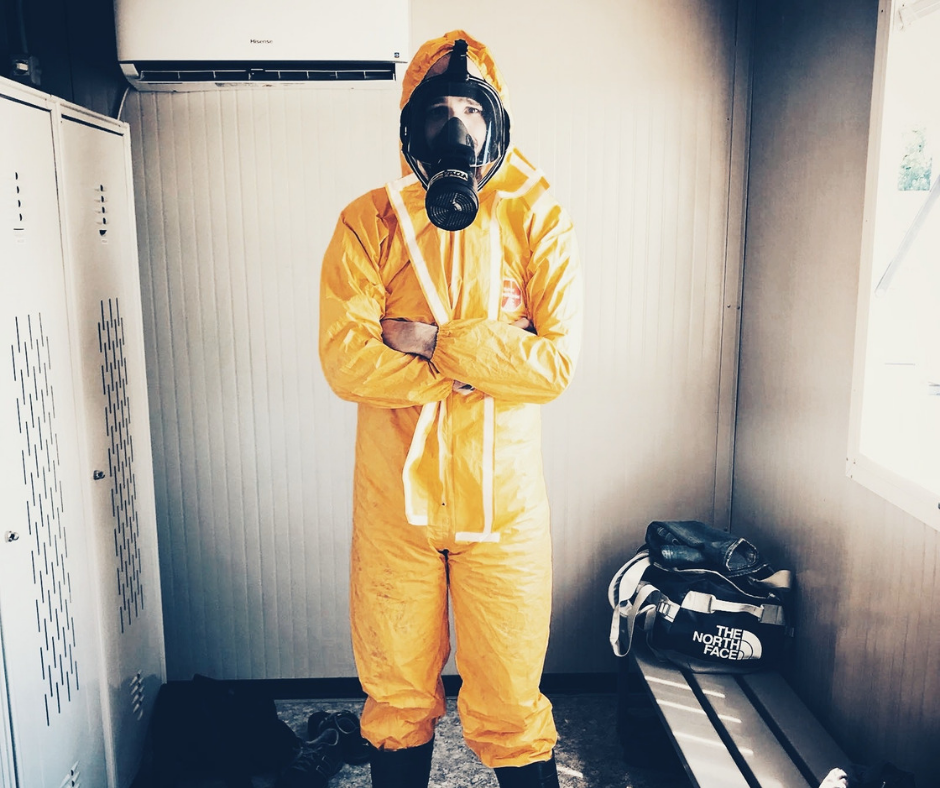|
In the radon testing and radon mitigation industry, we deal a lot with customers who are in the midst of a real estate transaction. This is so because the home inspection is many times the first time the seller of the home has ever conducted a proper radon test. As deadly as elevated radon levels can be in residential homes, public awareness about its dangers is still very low. Both buyers and sellers tend to get overwhelmed about elevated radon test results during the inspection of the home, but we can help you make the process go as smoothly as possible. To help you decide what actions you need to take to keep you safe in your new home, here are the 5 things you need to know about radon before buying. 1.RADON IS A SERIOUS HEALTH HAZARD: Radon gas is a Class A carcinogen, which means it is known to cause cancer in humans. Radon is actually the second leading cause of lung cancer in the US, only second to smoking. In non smokers, radon is the #1 cause of lung cancer. Humans are not the only ones affected by radon either, pets can develop lung cancer from radon gas as well, and are actually more susceptible to the effects because of their increased breathing rates. In either case, the effects of radon gas are not something to scoff at or ignore. Every homeowner should be aware of the effects of radon and how to monitor and control it in their home. Where does radon come from you might ask? Radon comes from the natural decay of uranium in the soil underneath your home. As the gas rises to dissipate in the air, the presence of your home blocks it from venting so it becomes trapped. Due to the pressure differential between your home and the soil underneath, radon can get drawn in through cracks in the floor, the sump crock, or even simply the pores of the concrete. Once inside, radon tends to build up in the lower levels of the home due to its density, and because of how long it takes to decay, radon can build up to unsafe levels throughout the living space. 2. RADON IS A FIXABLE ISSUE IN ANY HOME If the home you're buying does test high for radon gas, as scary as that may be, it should not deter you from buying the home. Elevated radon gas levels can be fixed in any home by installing a proper radon mitigation system. At levels of 4.0pCi/L or above, a radon mitigation system is recommended in the home, but don’t fret if the current levels are substantially higher than that. We have found that even homes with levels as high as 80-100pCi/L can be brought below 4.0pCi/L with a custom designed radon mitigation system. Our most typical retest results for residential homes fall below 2.0 and many coming even below 1.0. There may be many different factors that you consider when deciding whether or not to buy a certain home, but due to proven removal techniques, radon gas shouldn’t be one of them. 3. THERE ARE MULTIPLE OPTIONS FOR MITIGATION: We find that a lot of home buyers worry about the aesthetics of a radon mitigation system because they have seen other radon systems online or in their neighborhood that they didn’t like. While we agree that white PVC piping and a fan might not be the most ideal object to be placed on the exterior of your home, that doesn't mean it can’t be hidden. Homes with an attached garage can usually be fitted with a garage style radon mitigation system. Garage style radon mitigation systems have the piping and fan run from the basement, into the garage and then through the roof. A garage radon mitigation system, if possible, is the most aesthetically pleasing option for radon mitigation. Obviously, every home cannot be fitted with this style of system, but even if an exterior option is the only way to go, there are usually multiple options as to where the system can go on the exterior. We always work with our clients to find the spot on their home they are most comfortable with, so if the home you are buying needs a radon mitigation system and has to be installed before you move in, it is a good idea to be there on the day of install if possible. 4. WATCH OUT FOR RADON TESTING FRAUD Unfortunately in the radon industry, we see a lot of radon testing fraud. Some homeowners want to avoid the possibility of ever having to install a radon system themselves even if it means lying to the buyers, endangering their health. You can even see the prevalence of this by looking at how many people search Google for questions such as “how to pass a radon test” or “how to fool a radon detector”. Radon testers are not completely tamper proof and cannot be watched for the full testing period by a professional, so during the testing process, we’ve seen sellers open windows, or even move the test to the top level to make sure it comes back low no matter what. There isn’t a lot that can be done about this, however it is an important thing to be aware of. If you have a test done by an inspector and then the seller conducts their own test with a much different outcome, it may be time to question the results. Additionally, the EPA recommends testing every two years, so if the results are low when you buy, you should still have another test conducted soon after moving in. 5. GOING CHEAP CAN END UP BEING EXPENSIVE: Not being a part of the installation of a radon mitigation system for the home you are buying can end up being costly for you. If left up to the sellers of the home, they may choose the cheapest option just so they can get it done and get the closing over with as soon as possible with the smallest cost to them. Quality radon mitigation systems installed by certified and experienced contractors should cost anywhere between $800 and $1500. If you see a quote below that, you may be getting a low quality system in the end. Radon mitigation systems that are installed improperly or installed without proper permits being pulled for electrical (if needed), can cost you a lot down the road. The costs that can ensue after a poor installation include but are not limited to; fines from the city, service call costs to fix unsatisfactory work, time wasted by trying to contact the company for service, or even the cost of having the system removed and an entirely new system installed to get it to code or working as it should. Try to be a part of the mitigation process with the sellers of your home, and check reviews as well as company history before making a decision. We have fixed far too many improperly installed systems over our 21 years in business. If you are going to have mitigation done at your new home, make sure it’s done right the first time. Andrew KreklowLifetime Radon Solutions
4 Comments
12/19/2021 06:34:34 pm
I would like to have my house tested for ay radon before it causes allergies, and that is why I've decided to start looking for a service that may test it. Thank you for sharing here as well the importance of hiring qualified radon mitigation testers. I also agree with you that it will be a great idea to address the matter before it gets worst.
Reply
3/18/2022 12:39:28 pm
It's good to know that radon levels can be fixed! My husband and I started going house hunting a couple of weeks ago, and we found a home that we want to move into, but we're worried it might have high radon gas levels in it. We'll have to look into hiring a professional company that can test to see if there is radon in the home so that we can get it fixed!
Reply
5/10/2022 03:36:36 am
It’s very important to know about radon and its health risks, and have their homes tested to make sure they’re safe. Getting your home tested it could save your family
Reply
9/15/2023 08:36:09 am
It got me when you discussed that a proper radon mitigation system can fix elevated radon gas levels. My friend wants a radon test for her property. I should advise her to turn to an expert in radon tests to obtain reliable results.
Reply
Leave a Reply. |
AuthorBrian S. Thompson Archives
March 2023
|
- Home
-
Locations
- Lifetime Radon Mitigation Minneapolis
- Lifetime Radon Mitigation Milwaukee
- Lifetime Radon Mitigation Fond du Lac
- Lifetime Radon Mitigation La Crosse
- Lifetime Radon Mitigation Oshkosh
- Lifetime Radon Mitigation Eau Claire
- Lifetime Radon Mitigation Wausau
- Lifetime Radon Mitigation Green Bay
- Lifetime Radon Mitigation Janesville
- Lifetime Radon Mitigation Rochester
-
Services
- Radon Mitigation
- Radon Testing
- FREE Radon Testing
- Crawl Space Encapsulation
- Trichloroethylene (TCE)
- Commercial Radon Testing and Mitigation
-
Local Articles
>
- Lifetime Radon Mitigation Brookfield
- Lifetime Radon Mitigation Madison
- Lifetime Radon Mitigation Plymouth
- Lifetime Radon Mitigation Brooklyn Park
- Lifetime Radon Mitigation West Allis
- Lifetime Radon Mitigation Racine
- Lifetime Radon Mitigation Menomonee Falls
- Lifetime Radon Mitigation Muskego
- Lifetime Radon Mitigation Maple Grove
- Lifetime Radon Mitigation Greenfield
- Lifetime Radon Mitigation Franklin
- Lifetime Radon Mitigation Fitchburg
- Lifetime Radon Mitigation Whitefish Bay
- Lifetime Radon Mitigation Hartford
- Lifetime Radon Mitigation New Berlin
- Lifetime Radon Mitigation Shorewood
- Lifetime Radon Mitigation Blaine
- Lifetime Radon Mitigation Appleton
- Lifetime Radon Mitigation Whitewater
- Lifetime Radon Mitigation Cudahy
- Lifetime Radon Mitigation Germantown
- Lifetime Radon Mitigation Sun Prairie
- Lifetime Radon Mitigation Oak Creek
- Lifetime Radon Mitigation Coon Rapids
- Lifetime Radon Mitigation Beloit
- Lifetime Radon Mitigation Grafton
- Lifetime Radon Mitigation Cedarburg
- Lifetime Radon Mitigation Burlington
- Lifetime Radon Mitigation Caledonia
- Lifetime Radon Mitigation Richfield
- Lifetime Radon Mitigation Duluth
- Lifetime Radon Mitigation Brown Deer
- Lifetime Radon Mitigation Sussex
- Lifetime Radon Mitigation South Milwaukee
- Lifetime Radon Mitigation Middleton
- Lifetime Radon Mitigation Waunakee
- Lifetime Radon Mitigation Watertown
- Lifetime Radon Mitigation Mequon
- Lifetime Radon Mitigation Pleasant Prairie
- Lifetime Radon Mitigation Greendale
- Lifetime Radon Mitigation Wauwatosa
- Lifetime Radon Mitigation Glendale
- Lifetime Radon Mitigation Oregon
- Lifetime Radon Mitigation Port Washington
- Lifetime Radon Mitigation De Pere
- Lifetime Radon Mitigation Pewaukee
- Lifetime Radon Mitigation Oconomowoc
- Lifetime Radon Mitigation Manitowoc
- Lifetime Radon Mitigation Verona
- Lifetime Radon Mitigation Stevens Point
- Lifetime Radon Mitigation Fort Atkinson
- Lifetime Radon Mitigation Beaver Dam
- Lifetime Radon Mitigation Little Chute
- Lifetime Radon Mitigation Onalaska
- Lifetime Radon Mitigation Baraboo
- Lifetime Radon Mitigation Waupun
- Lifetime Radon Mitigation River Falls
- Lifetime Radon Mitigation Marshfield
- FAQ's
- Blog
- Meet the Team
- Contact
- Testimonials
- Privacy
Lifetime Radon Solutions, Inc.
Copyright © 2018
Copyright © 2018






 RSS Feed
RSS Feed